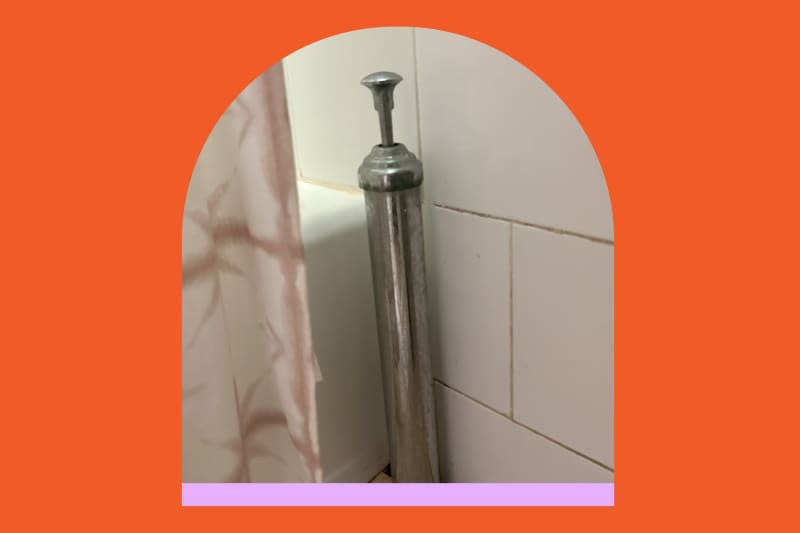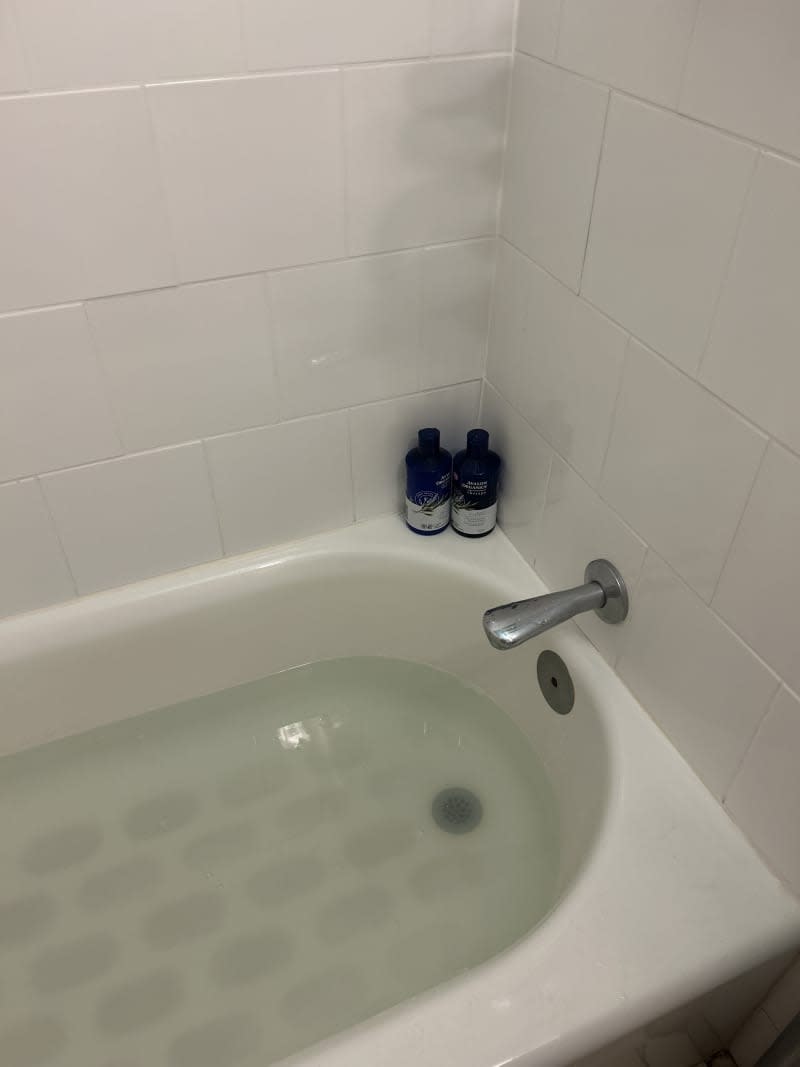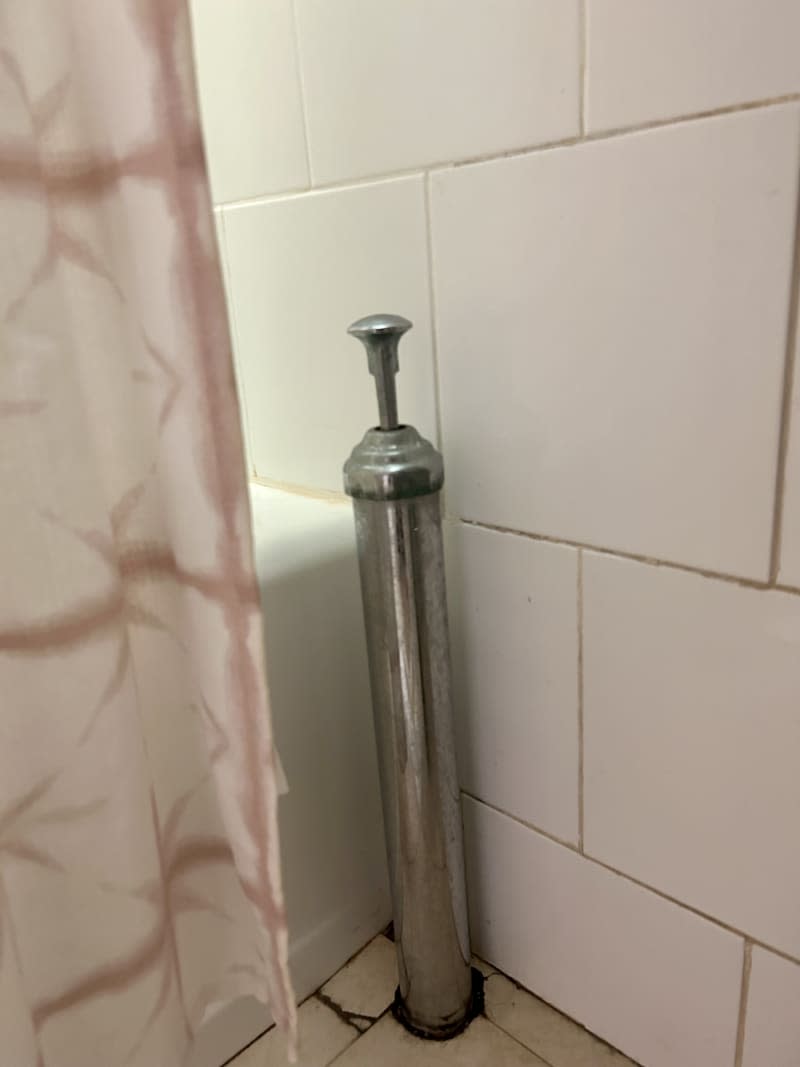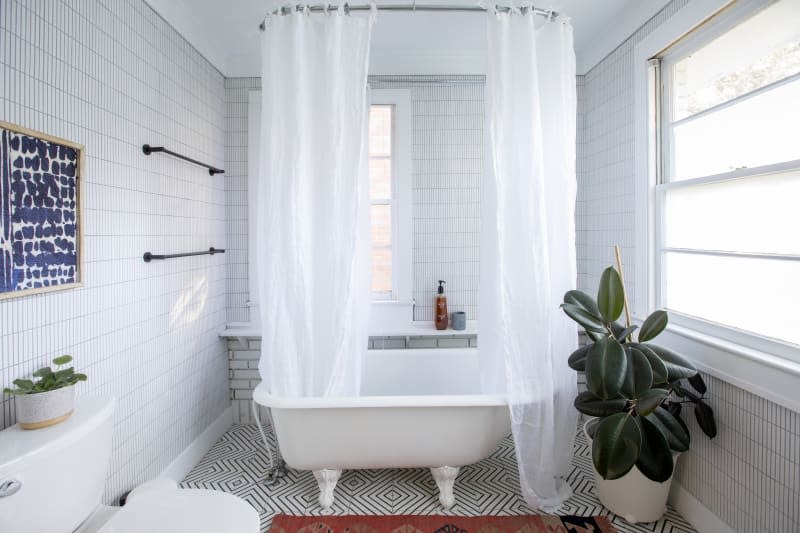The Mysterious Feature Hiding in Plain Sight in My Pre-War Apartment

Moving into a new apartment always comes with surprises. And moving into a New York City apartment can open up a whole new world of possibilities, from a shower in the kitchen to a bathroom almost too small to fit in. But when I first moved into my Brooklyn one-bedroom, I didn’t notice any quirks until I went to take a shower.
I turned on the faucet, and after giving it a minute to warm up, I noticed the tub was filled with water. No problem, I thought — just open the valve. But when I couldn’t find anything that resembled the little metal switch I was used to, I was perplexed. It wasn’t a toe-tap or a lift-and-twist drain, either, which I had used in other homes. I reasoned that the drain must be clogged, which was particularly disheartening after a day of moving and a desperate desire for a shower. Feeling lost, I texted my boyfriend, who is not a plumber but usually has a good idea of what to do in tricky household situations.

He replied with a voice memo advising me to take a toilet plunger to the shower drain and see if I could get the water moving. When I did, the water level didn’t lower, but I did notice a flow of water coming from somewhere almost … outside of the tub? I kept plunging with an ear out for the source, until I finally noticed a short, pipe-like metal protrusion in the floor right next to the tub. And then I realized: That was the drain lever.
About six inches tall and notably not in the shower, it hadn’t occurred to me that it might have anything to do with the plumbing. But when I pulled the rounded top of the wand up, the trapped water suddenly swirled down into the drain. After a strenuous interstate move and a mystery solved, it was among the most satisfying showers I’ve had.
But still, my curiosity wasn’t quite satisfied. What was this drain pipe contraption that I’d never seen before? I knew I had to consult an expert to find out more.

“It’s an external drainpipe for a bathtub,” says Courtney Harmon, president of bluefrog Plumbing + Drain. The answer is so simple I have to laugh — I almost expected some mystical name. Also called a standing waste or barrel waste drain, the way it works is intuitive, too. “Water from the bathtub flows into the exposed drain at the base of the tub, then down through the external drainpipe, which carries it to the floor drain or directly into the drainage system of the building,” Harmon explains, adding that “this system uses gravity to assist in the water flow away from the tub.”

So why had I never seen this feature before? For one, they’re more commonly seen in older homes. “This type of drain can be found in a variety of buildings, but it may signify an older construction where plumbing was retrofitted,” Harmon says. “It can be easier to install in certain environments where internal plumbing is not feasible or would be too invasive to install.” Given that my pre-war apartment building was constructed in the early 1930s, according to the listing details, it makes sense that a vintage feature like this would end up in my bathroom.
These drains don’t only appear for utilitarian purposes, though. Harmon says some people opt for external tub drains to make a style statement. “It can be a design choice for a unique, industrial, or vintage aesthetic,” she says. “It’s less common in modern, standard construction due to the preference for concealed plumbing.”
Although standing bath wastes make for easy maintenance (since the pipe is readily accessible), they’re not without their drawbacks. They’re more prone to damage, Harmon explains, as they’re exposed. And, she says, they’re unsightly to some people — especially those who prefer modern design. To me, though, they are perfect.

